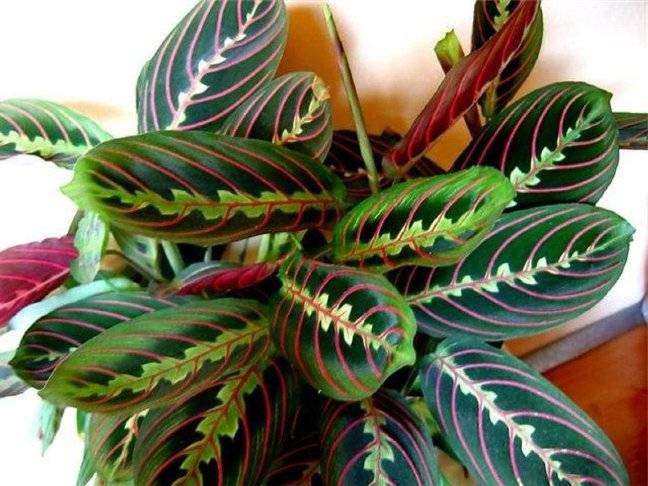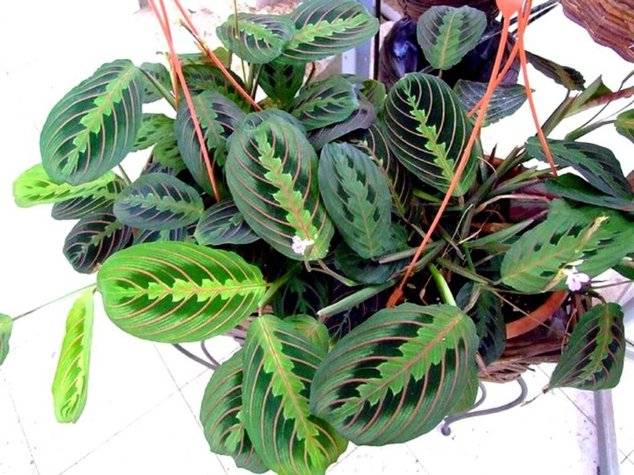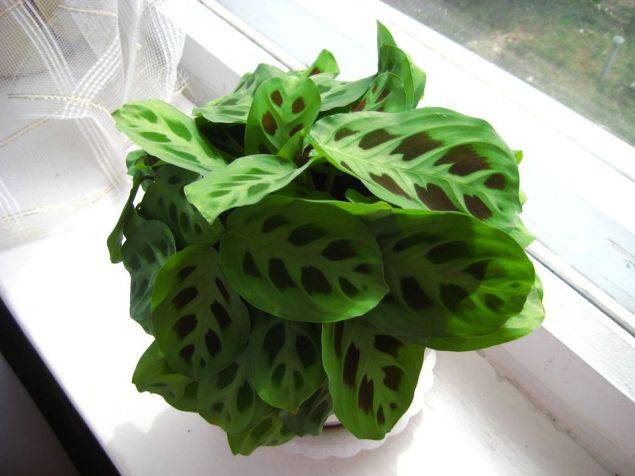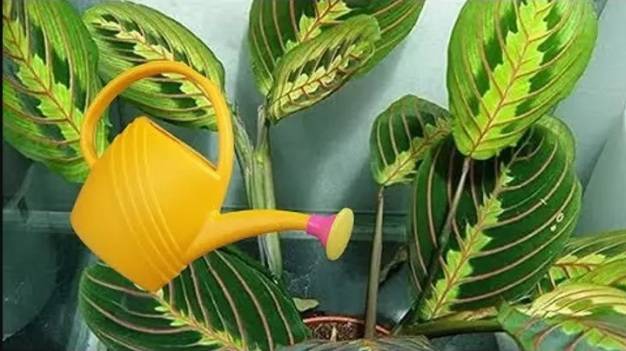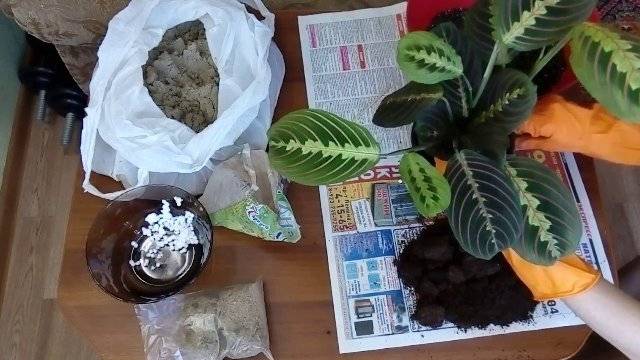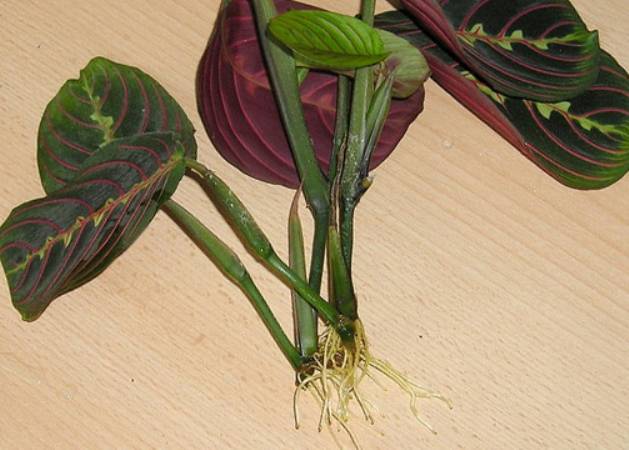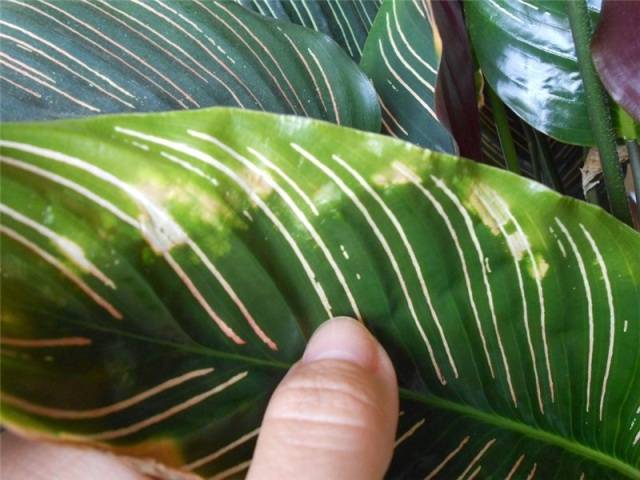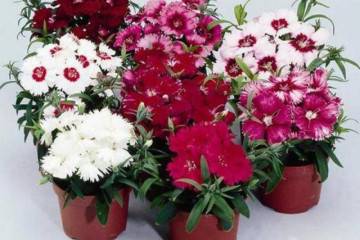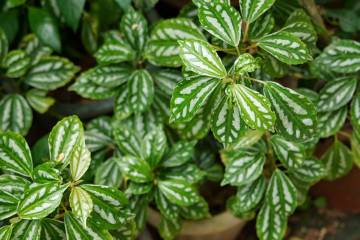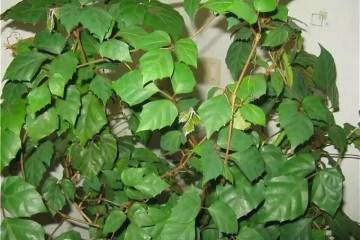Arrowroot Tri-color - home care
Content:
Arrowroot tricolor attracts the attention of lovers of exotic plants. And if we add simplicity to care and the ability to adapt to living conditions to decorativeness and visual appeal, then this makes it indispensable when it comes to decorating houses and office premises.
What does the arrowroot look like, which family does it belong to?
Arrowroot is an evergreen perennial belonging to the arrowroot family of 25 species. The plant is named after the Venetian physician and botanist Bartalomeo Maranta. Growing habitat - tropical rainforests of South America. In addition to the name tricolor, the plant has other names. Arrowroot tricolor, fascinator, red-streaked and even prayer, all these are links of the same chain.
Common varieties
Description of varieties of arrowroot fascinator:
- Tricolor (Tricolor) arrowroot grows up to 40 cm, slightly less in breadth. Velvet leaves in the shape of an oval, 12 cm long, planted on short petioles give a special charm to the plant. The center of the leaf is green, the edges are lighter. Red-crimson veins stand out on the greenery, along the central one there is a light jagged strip with dark stains. The other side of the leaf is lilac-purple in color.
- The bicolor arrowroot is less well known, but is just as in demand as the tricolor specimen. It has no roots, is neat and small. Leaves are oval, compact, smoothly rounded at the edges. The green color is dissected with white stripes along the veins. The flowers are small, white with dark spots.
- Massange (Black arrowroot). Dark green leaves appear black. The vein and stripes are silvery. The variety is capricious, which is why it is almost never grown at home.
- Kerhove arrowroot with small oval leaves 15 cm long. White stripes with dark spots run along the leaf plate. The reverse side of the sheet is blue. Leaves sit on short stalks.
There are other interesting varieties, but less in demand for home cultivation.
Healing properties
The medicinal properties of the plant have been sufficiently studied. Tubers contain a lot of starch and cellulose. Flowers are used in dietary nutrition and as a general tonic. The vitreous root is in demand in the manufacture of baby food, used for the prevention of thrombosis and thrombophlebitis. However, if the elements of culture are intolerant, it makes no sense to take risks.
Features of caring for a plant at home
Lovers of the exotic are happy to grow maranta. This beautiful plant is not whimsical and responds with gratitude to any care and attention. But it is necessary to adhere to the conditions of its existence in nature.
Temperature
The tricolor beauty grows best when the thermometer value rises to 20-28 ° C in summer. In winter, up to 16-18 ° C. At temperatures below 10 ° C, the plant dies. Drafts and sudden changes in temperature have a negative effect.
Lighting
Arrowroot fascinator tricolor loves shade. The plant is suitable for the east or north side of the room. In the summer, it is better to install the pot in the back of the room, in the winter next to the window.
In the absence of such an opportunity, the flower is grown under a fluorescent lamp turned on for 16 hours a day.
Watering and moisturizing
When caring for a perennial arrowroot tricolor at home, it is important to maintain a high level of humidity. Therefore, water regularly and abundantly. In the summer, every day or every other day. In winter, 3-4 times a week are enough. Water for irrigation is preliminarily settled for at least 12 hours.
At high temperatures in the apartment, arrowroot must be sprayed from a spray bottle or humidified. In addition, the foliage is constantly wiped with a damp cloth. Sometimes the pot is placed in a wet claydite tray to help maintain moisture.
Priming
The arrowroot pot is shallow, but wide, since the resulting tubers require a lot. The bottom of the pot is covered with expanded clay (5 cm). You can use rubble or pebbles.
The soil should be loose and slightly acidic. The following composition is prepared independently:
- deciduous humus;
- peat;
- coniferous bark.
The components are taken in a 2: 1: 1 ratio. Charcoal (river sand) and sphagnum moss are added. Or acquire a versatile mold in the store.
Top dressing
The tricolor needs feeding in the summer. Fertilizers are applied once every 2 weeks. Mineral and organic compounds alternate. Nitrogen fertilizing is excluded. They change the color of the foliage.
Pruning
Long lateral shoots are completely cut off at least once every two years. After 45 days, the arrowroot will recover. The plant will be completely rejuvenated, its appearance will improve.
Features of care in winter, dormant period
Arrowroot fascinator enters a resting phase in October. Until February, watering is reduced, feeding is excluded, and low temperatures in the apartment are avoided.
When and how it blooms
At home, arrowroot does not always bloom.
Flowering period
Arrowroot tricolor blooms in early summer. Under good conditions, flowers appear during the entire hot period. The flowers are so unattractive that many arrowroot owners cut the flower stalks after emergence. Thus, preserving the strength of the tricolor and nutrients in the soil.
Type and shape of flowers
Inflorescences are spiky white or purple in color. The flowers are small, asymmetrical, bell-like. Each has 3 small and 2 large petals, different colors. These are light, yellow, lilac bells, sometimes with multi-colored specks. At the end of summer, single-seeded capsules appear in place of flowers.
Reproduction of arrowroot tricolor
There are several ways of vegetative propagation.
Dividing the bush
When transplanting, the mother plant is divided into parts and rooted in separate pots. For seedlings, loose nutrient soil is taken. The planted plant is covered with a film or part of a plastic bottle. The soil is regularly watered and a comfortable temperature of 20 ° C is maintained.
Cuttings
To implement this method, 10 cm shoots with leaves are selected. They are cut and kept in a growth promoter.Then they are placed in a jar of warm water and wait for the roots to appear (1.5 - 2 months). Finally, the seedlings are planted in sand and peat soil.
Air layering
Petioles of mature plants with drying foliage give aerial roots. Over the summer, their length increases to 15 cm. Buds are formed on such petioles in spring, then leaves. Part of the aerial root is cut along with the foliage and either rooted in the ground, or installed in a jar of water. Then the procedure continues as in the case of cuttings.
Transfer
It is supposed to transplant a prayer flower in the spring. Before the procedure, the bush is cleaned of old and damaged foliage, dry roots. A new pot of a larger size is chosen, preferably a plastic one. To prevent moisture from stagnating, good drainage is added. Arrowroot transplant is carried out by transshipment method. The transplant soil is described above.
Possible growing problems and diseases
When growing, difficulties and problems arise that need to be eliminated immediately.
What problems can you face:
- The flower sheds buds and leaves. Occurs when there is insufficient nutrition or soil leaching. Feeding with peat and organic matter is required, watering with an acidified liquid.
- Leaves turn pale when exposed to bright sun.
- The tips of the leaves dry out or growth slows down. Reason: excess light or phosphorus fertilization. Dryness or excessive moisture in the air.
- Rolling leaves. Reason: lack of heat or moisture.
Pests
The appearance of spots on the leaves signals about fungal diseases that appear due to the ingress of liquid on the foliage. Fungicides help.
The appearance of a whitish bloom on foliage is a sure sign of a mealybug. Yellow dots and cobwebs on the bushes indicate a spider mite. Sticky plaque forms when infested with scabies. Such pests appear when there is a lack of moisture. Control methods - insecticides.
If you take care of the arrowroot correctly, it will bring positive energy, calmness and comfort to the house, relieve you of quarrels, and save family well-being.
